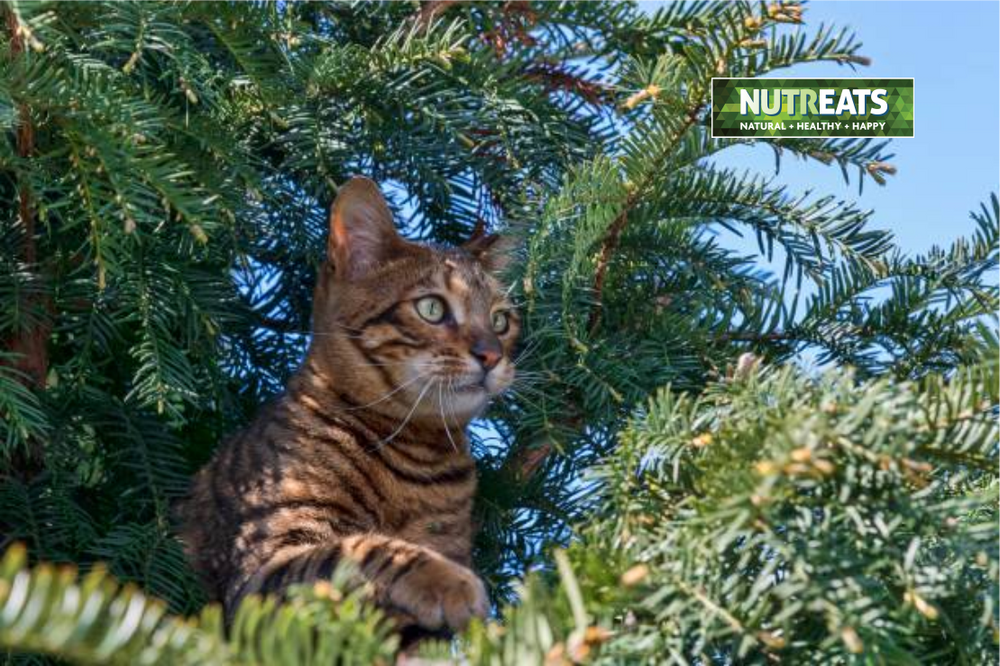Cats and Their Wild Relatives: Exploring the Family Ties
Ben WintersDomestic cats have a long and fascinating history that links them to some of the most majestic and powerful animals in the wild: big cats like tigers, lions, and leopards.
Understanding the connections between our domestic feline friends and their wild relatives can deepen our appreciation for their unique behaviors and traits. In this blog post, we'll explore the fascinating family ties between domestic cats and their wild cousins.
The Feline Family Tree
From Wildcats to House Cats
Domestic cats (Felis catus) share a common ancestry with wildcats, including the African wildcat (Felis lybica), which is believed to be the primary ancestor of today's domestic cats. These wildcats were first domesticated around 9,000 years ago in the Near East, where they helped control rodent populations in agricultural communities.
Big Cats: The Majestic Relatives
Domestic cats belong to the Felidae family, which includes both small and big cats. Big cats, such as tigers, lions, leopards, and cheetahs, are some of the most recognizable members of this family. Despite their size differences, domestic cats and big cats share many physical and behavioral traits, highlighting their shared evolutionary heritage.
Behavioral Similarities
Hunting and Stalking
Both domestic cats and big cats are skilled hunters. They share similar hunting behaviors, such as stalking, pouncing, and using their sharp claws and teeth to catch prey. Even if your domestic cat is well-fed, you'll often see them exhibit hunting behaviors while playing with toys.
Territoriality
Territorial behavior is another common trait among cats, whether they are domestic or wild. Domestic cats often mark their territory by scratching, rubbing their scent glands on objects, and even spraying. Big cats use similar methods to establish and defend their territories in the wild.
Grooming and Social Behavior
Cats are known for their meticulous grooming habits, which serve to keep their fur clean and free of parasites. This behavior is observed in both domestic cats and big cats. Additionally, social structures and behaviors, such as forming prides or solitary living, vary among different cat species but underline the complexity of feline social interactions.
Physical Traits
Sharp Claws and Teeth
Both domestic cats and big cats possess sharp claws and teeth that are essential for hunting and self-defense. Their retractable claws allow for silent stalking and a powerful grip on their prey.
Acute Senses
Cats have highly developed senses of sight, hearing, and smell, which make them effective hunters. Their night vision is particularly remarkable, allowing them to see in low-light conditions, which is a crucial adaptation for nocturnal hunting.
Agility and Flexibility
Cats are incredibly agile and flexible, capable of jumping great heights and distances relative to their size. This agility is seen in both domestic cats and big cats, enabling them to navigate their environments skillfully.
Differences Between Domestic Cats and Big Cats
Size and Strength
The most obvious difference between domestic cats and big cats is their size and strength. While domestic cats are small and relatively lightweight, big cats like tigers and lions are among the largest and strongest predators in the animal kingdom.
Social Structure
Domestic cats are generally more solitary than some of their big cat relatives. For instance, lions live in social groups called prides, while tigers and leopards are more solitary. Understanding these social differences can provide insights into your cat's behavior and social needs.
Diet and Hunting
While domestic cats primarily rely on their owners for food, big cats must hunt and catch their prey to survive. This difference significantly influences their behavior and lifestyle, with big cats requiring vast territories to support their hunting needs.
Cats, whether domestic or wild, are part of a diverse and fascinating family with deep evolutionary roots.
By understanding the connections between our domestic pets and their wild relatives, we can better appreciate the unique traits and behaviors that make cats such extraordinary animals. Whether they're stalking a toy mouse in your living room or a gazelle on the savannah, cats continue to captivate and amaze us with their grace, agility, and beauty.






